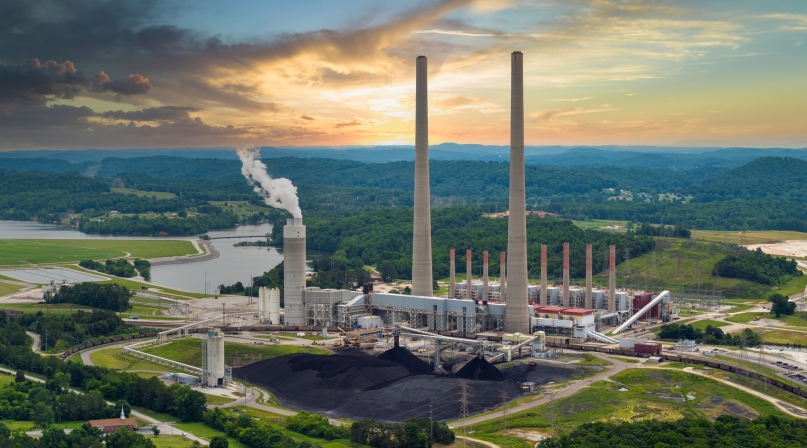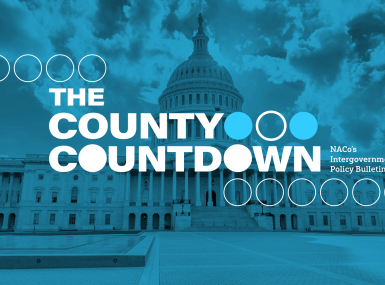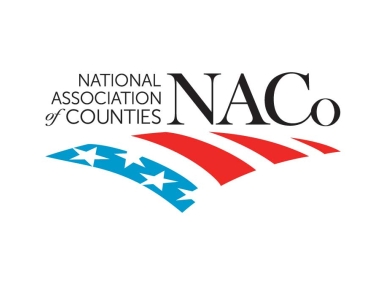DOI, DOE and the EPA announce new funding and regulatory measures to support U.S. coal industry
Author

Zeke Lee

Charlotte Mitchell Duyshart

Andrew Nober
Upcoming Events
Related News

Key Takeaways
On September 29, the U.S. Departments of the Interior (DOI), Energy (DOE) and the Environmental Protection Agency (EPA) announced coordinated actions to expand domestic coal production and coal-fired energy generation. The new announcements will impact counties both as stewards of environmental quality and partners in energy production decisions.
Background
The White House has made reinvigorating the U.S. coal industry one of its core energy policy goals. Since taking office January, President Trump has signed multiple executive orders (EOs) aimed at boosting the domestic coal industry — including EO 14154, Unleashing American Energy; EO 14261, Reinvigorating America’s Beautiful Clean Coal Industry and several others — with the dual goal of expanding domestic coal mining and promoting the continued operational viability of coal-fired power plants.
What did DOI announce?
DOI announced the availability of more than 13 million acres of land for new coal leases through the Bureau of Land Management (BLM). This announcement is consistent with previous actions by the administration to expand energy projects on federal public lands. Among other energy policy changes, the One Big Beautiful Bill Act (OBBBA) (P.L. 119-21) directed DOI to offer new coal leases on at least 4 million acres of federal lands, and this move fulfills that mandate.
OBBBA also lowered the royalty rate — which determines how much of a project’s revenue is shared with the federal government — for coal projects from 12.5 percent to 7 percent. For most BLM coal leases, 50 percent of government royalty earnings are returned to the states, who may subsequently distribute portions of that revenue to county and local governments.
What did DOE announce?
DOE announced $625 million in funding for initiatives to extend the operational life of coal-fired power plants. $350 million will go to recommissioning and retrofitting existing coal-fired plants and $175 million will support coal projects that build energy resilience in rural communities.
The remaining $100 million will go toward projects aimed at modernizing coal plant systems to work with other fuels, such as natural gas. DOE did not announce details about how the funding would be distributed to recipients.
What did the EPA announce?
The EPA announced two separate rulemaking actions related to coal-fired power plant emissions. The EPA is soliciting public comments on both proposals.
The first rule proposal extends a deadline for coal-fired plants to decide whether they will shut down, convert to another energy source or comply with more stringent pollution controls established by the 2024 Effluent Limitation Guidelines (ELG) Rule for steam electric power units. Under Clean Water Act authority, the EPA’s 2024 Rule had previously ordered plants to decide on a path by December 31, 2025. However, the deadline has now been extended to the end of 2031, reducing pressure on plants to make decisions about their long-term future operations.
The EPA also issued an advance notice of proposed rulemaking (NPRM) related to the Regional Haze Rule, a regulation under the Clean Air Act that sets special air quality and visibility guidelines in 156 national park and wilderness areas nationwide. EPA is soliciting public feedback for how to restore “cooperative federalism” to the Regional Haze Rule’s state implementation plan (SIP) process. Under the NPRM, SIPs were developed by Tribal, state, and multi-state regional planning organizations in conjunction with the EPA and federal land management agencies and are subject to regular review.
Interested parties have through November 3, 2025, to comment here on the EPA’s ELF Rule proposal and through December 1, 2025, to provide feedback here on its Regional Haze Rule.
What is the impact on counties?
Counties play a key role in managing both challenges and opportunities presented by changes to the energy fuel production and generation landscape. As energy policies shift, counties remain committed to building resilient economies and uplifting local involvement in decision-making.
NACo supports the responsible development of energy resources and infrastructure across all sources, including coal, and has long advocated for the federal government to maintain a robust framework for collaboration that protects local authority and decision-making on energy production matters.
Counties with energy projects sited on public lands within their borders rely on resource revenue sharing programs to support county budgets as they provide essential local services like emergency response and education. Increased development also creates greater demand for services, putting a strain on local infrastructure.
As the federal government increases opportunities for energy and mineral projects on federal public lands, maintaining a fair royalty rate is crucial to ensuring that local communities benefit from increased activity and production.
Additionally, as stewards of local communities’ public and environmental health, counties are key intergovernmental partners in air quality management. NACo supports the revision of SIP review processes when air quality management programs have proven to be effective. Counties urge EPA to put forth clear regulatory guidance and provide opportunities for local governments to have meaningful input on and review of SIPs.
What comes next?
NACo will continue to monitor administration policies for changes that impact counties, including the result of EPA rulemaking and any further announcements about DOE funding disbursements. Through initiatives like Building Resilient Economies in Coal Communities (BRECC), NACo has worked with local leaders to attract investment, develop workforce strategies and diversify local economies in coal communities.
More information about the Trump Administration’s previous actions to boost the coal industry is available here.
Advocacy
U.S. Environmental Protection Agency announces it will uphold 2024 PFAS CERCLA rule
On September 17, the EPA announced that the agency will uphold the 2024 rule designating two types of PFAS as hazardous under the Comprehensive Environmental Response, Compensation, and Liability Act.

Related News

County Countdown – Dec. 1, 2025
Every other week, NACo's County Countdown reviews top federal policy advocacy items with an eye towards counties and the intergovernmental partnership.

Counties Celebrate Key Permitting Inclusions in SPEED Act
NACo issued the following statement in response to the passage of the Standardizing Permitting and Expediting Economic Development (SPEED) Act (H.R. 4776), which advanced out of the U.S. House Committee on Natural Resources on November 20.

House Natural Resources Committee advances Standardizing Permitting and Expediting Economic Development (SPEED) Act
On November 20, the U.S. House Committee on Natural Resources advanced the Standardizing Permitting and Expediting Economic Development (SPEED) Act (H.R. 4776), which would make important changes to streamline federal permitting and strengthen county involvement in decision-making by amending the National Environmental Policy Act. Counties support commonsense permitting reforms, and NACo secured provisions in the SPEED Act that would guarantee counties a seat at the table during federal environmental reviews.